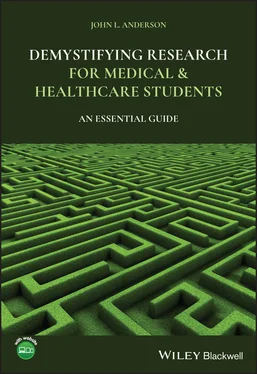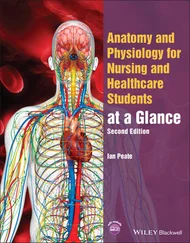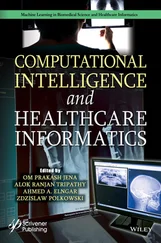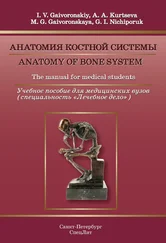31 Appendix F: Research Skills: Analysing Qualitative DataIntroduction General Thematic Analysis (GTA) Framework Analysis Colaizzi's Approach Verification ‘Quantifying’ Qualitative Data References
32 Appendix G: Research Skills: Writing Research ReportsOverview What do you Want to Say? Writing in English as a Second Language A ‘Writing Blank’ References
33 POSTSCRIPT
34 Index
35 End User License Agreement
1 Chapter 1 TABLE 1.1 Ontology, epistemology. Theoretical perspective, methodology, and ...
2 Chapter 3 TABLE 3.1 Patient and physician characteristics in each vignette.
3 Chapter 5 TABLE 5.1 Assessment of radiological appearance at six months as compared wi... TABLE 5.2 Condition at 12 months in relation to condition on admission.
4 Chapter 6TABLE 6.1 Standardised death rate per annum per 1000 men aged 35 years and a...
5 Chapter 8TABLE 8.1 Stages in a survey.
6 Chapter 9TABLE 9.1 Statements recorded, reported and correctly recalled.TABLE 9.2 Comparison of three studies.TABLE 9.3 Category of information and percentage of statements correctly rec...
7 Chapter 11TABLE 11.1 Type of cough; aetiology, treatment, and outcome.TABLE 11.2 Local terms and Western medical equivalents.
8 Chapter 13TABLE 13.1 Comparison of descriptive and interpretive phenomenology.TABLE 13.2 Summary of the study themes and sub‐themes.TABLE 13.3 Participants’ experiences of helplessness, hopelessness and suici...
9 Chapter 16TABLE 16.1 Policy analysis in the ideal and ‘real’ world.
10 Chapter 17TABLE 17.1 Themes and sub‐themes.TABLE 17.2 Difficulties experienced as a result of dyslexia, by gender.TABLE 17.3 Effects of dyslexia whilst at medical school by gender.
11 Chapter 19TABLE 19.1 Aspects of research, audit, and service evaluation.
12 Appendix ATABLE A.1 Flesch reading‐ease scores.TABLE A.2 Reading Ease scores in newspapers and magazines.
13 Appendix BTABLE B.1 Using the PICO formula for defining search criteria.TABLE B.2 Dr Assaf’s PICO Search Criteria.
14 Appendix FTABLE F.1 Emerging themes from ‘Just sign this form’.TABLE F.2 Blank grid.TABLE F.3 Filling in the grid.
1 Chapter 1 FIGURE 1.1 The 10‐point pain scale (Harvard Men’s Health Watch, 2018)....
2 Chapter 2 FIGURE 2.1 Single arm experiment. FIGURE 2.2 Twin arm experiment. FIGURE 2.3 Triadic design with yoked controls. FIGURE 2.4 Max Joseph von Pettenkoffer. FIGURE 2.5 Shuttlebox design.
3 Chapter 3 FIGURE 3.1 John Snow – being very smart and learned. FIGURE 3.2 Postoperative treatment with narcotics (Means for each day + Stan... FIGURE 3.3 Egbert et al.'s research design.
4 Chapter 5 FIGURE 5.1 RCT experimental design. FIGURE 5.2 RCT experimental design showing double blinding. FIGURE 5.3 Majeed et al. – twin sets of dressings used in ‘blinding’. FIGURE 5.4 Sihvonen et al.: RCT design. FIGURE 5.5 Flowchart of four phases (enrollment, allocation, intervention, f...
5 Chapter 7FIGURE 7.1 Doll and Bradford‐Hill’s BMJ article.FIGURE 7.2 Outline of the case‐control method.
6 Chapter 8FIGURE 8.1 Essential research equipment 1970 – clockwise from left: slide ru...FIGURE 8.2 The first interview: Bethnal Green to northwest England.FIGURE 8.3 The interviews progress …FIGURE 8.4 A solution!
7 Chapter 10FIGURE 10.1 Bronisław Malinowski.FIGURE 10.2 Malinowski comparing gourds with Trobriand Islanders, 1918.FIGURE 10.3 William Foote Whyte.FIGURE 10.4 A street corner.FIGURE 10.5 Howard Becker.FIGURE 10.6 David Rosenhan.
8 Chapter 11FIGURE 11.1 Map of states in Nigeria – Imo state is in the south of the coun...FIGURE 11.2 Transpirates (foam‐like discharge from plants) – ‘Cucoo Spit’ – ...FIGURE 11.3 A magic shop in Glastonbury high street.FIGURE 11.4 Another magic shop in Glastonbury.
9 Chapter 12FIGURE 12.1 The drama triangle.
10 Chapter 13FIGURE 13.1 Edmund Husserl – looking descriptive.FIGURE 13.2 Martin Heidegger – looking interpretive.FIGURE 13.3 Cheryl T. Beck – being descriptive.FIGURE 13.4 Seb – being interpretive.
11 Chapter 19FIGURE 19.1 HRA approvals processes.FIGURE 19.2 The PG student dissertation approvals process within DME, BSMS....
12 Appendix BFIGURE B.1 Aalya’s PRISMA diagram/flowchart.
13 Appendix CFIGURE C.1 An example of a lab safety poster.
14 Appendix EFIGURE E.1 ‘Can I contribute?’FIGURE E.2 ‘Yes, you can say something.’FIGURE E.3 ‘No – wait.’FIGURE E.4 ‘HELP! Please take over.’FIGURE E.5 ‘Please say something.’FIGURE E.6 ‘Look at her/him over there.’FIGURE E.7 ‘Look at her/him over there.’
15 Appendix FFIGURE F.1 Debbie Sharman's presentation of her data.
1 Cover Page
2 Dedication Page To my wife, Clair. Thank you for all your love and support – and for making it fun!
3 Title Page
4 Copyright Page
5 Preface
6 About the Companion Website
7 Table of Contents
8 Begin Reading
9 Appendix A Research Skills: Obtaining Informed Consent
10 Appendix B Research Skills: Searching the Literature
11 Appendix C Research Skills: Laboratory Safety
12 Appendix D Research Skills: Interviewing
13 Appendix E Research Skills: Focus Groups
14 Appendix F Research Skills: Analysing Qualitative Data
15 Appendix G Research Skills: Writing Research Reports
16 POSTSCRIPT
17 Index
18 Wiley End User License Agreement
1 ii
2 iii
3 iv
4 vi
5 vii
6 vi
7 1
8 2
9 3
10 4
11 5
12 6
13 7
14 8
15 9
16 10
17 11
18 12
19 13
20 14
21 15
22 16
23 17
24 18
25 19
26 20
27 21
28 22
29 23
30 24
31 25
32 26
33 27
34 28
35 29
36 30
37 31
38 32
39 33
40 34
41 35
42 36
43 37
44 38
45 39
46 40
47 41
48 42
49 43
50 44
51 45
52 46
53 47
54 48
55 49
56 50
57 51
58 52
59 53
60 54
61 55
62 56
63 57
64 58
65 59
66 60
67 61
68 62
69 63
70 64
71 65
72 66
73 67
74 68
75 69
76 70
77 71
78 72
79 73
80 74
81 75
82 76
83 77
84 78
85 79
86 80
87 81
88 82
89 83
90 84
91 85
92 86
93 87
94 88
95 89
96 90
97 91
98 92
99 93
100 94
101 95
102 96
103 97
104 98
105 99
106 100
107 101
108 102
109 103
110 104
111 105
112 106
113 107
114 108
115 109
116 110
117 111
118 112
119 113
120 114
121 115
122 116
123 117
124 118
125 119
126 120
127 121
128 122
129 123
130 124
131 125
132 126
133 127
134 128
135 129
136 130
137 131
138 132
139 133
140 134
141 135
142 136
143 137
144 138
145 139
146 140
147 141
148 142
149 143
150 144
151 145
152 146
153 147
154 148
155 149
156 150
157 151
158 152
159 153
160 154
161 155
162 156
163 157
164 158
165 159
166 160
167 161
168 162
169 163
170 164
171 165
172 166
173 167
174 168
175 169
176 170
177 171
Читать дальше












